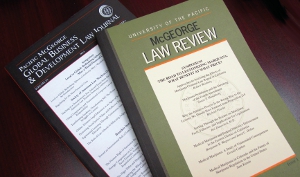Document Type
Article
Publication Date
2017
Abstract
In Walker v. Texas Division, Sons of Confederate Veterans, Inc., the Court extended its previous holding in Pleasant Grove City, Utah v.Summum that a city’s donated park monuments were government speech to the privately proposed designs that Texas accepts and stamps onto its specialty license plates. The placement of the program into the new doctrinal category is significant because the selection criteria for government–private speech combinations that produce government speech are “exempt from First Amendment scrutiny.” By contrast, when the government selects private speakers to participate in a private speech forum, its criteria must be reasonable in light of the forum’s purpose and viewpoint neutral. The Walker Court drew from Summum to offer three features of the speech access programs to support its reasoning that they produced government speech rather than the “purely private speech” that emanates from created forums. Courts have accurately perceived the three factors to form a “test,” but have applied it too broadly to all types of programs where governments assert that their combinations with private entities produce government speech. The results have been conflicting and display confusion about what the prongs of the new test mean and how they should be applied to make the critical determination of which government–private speech combinations create government identity speech and which are forums.
In fact, the Walker test appropriately applies only when a government entity asserts that its collaboration with private speakers is to convey a message about its own “image” or “identity.” In the context of commissioned government speech, the Court has held that a showing of government control effective to tailor the content of the private submissions to advance the substantive policy objective is sufficient to demonstrate that the combination produces government speech. But when the government’s purpose is to fuse private submissions into a broad statement of group identity, no determinate policy parameters exist against which to assess whether the government’s control over the private speech content is effective to achieve the objective. This difference from the preexisting combinations that the Court had labeled “government speech” explains the need to articulate a new test to assess a government entity’s claim that its combination with private entities produces a government identity message.This Article situates the new Walker test within the broader Free Speech Clause doctrinal framework, and within the different types of government–private speech combinations. It explains the steps of inquiry that lead to application of the test, and analyzes each prong in depth, the underlying constitutional speech principles, and the relevant evidence. The final result is a blueprint for legal analysis and policymaking at the thin line between speech access programs that the government can administer without constitutional restraint because they produce government speech and those to which Free Speech Clause equal access limits apply.
Publication Title
Pepp. L. Rev.
Volume
44
First Page
305
Recommended Citation
Leslie Gielow Jacobs, Government Identity Speech Programs: Understanding and Applying the New Walker Test, 44 Pepp. L. Rev. 305 (2017).



